Reconstructing the Early Qanun
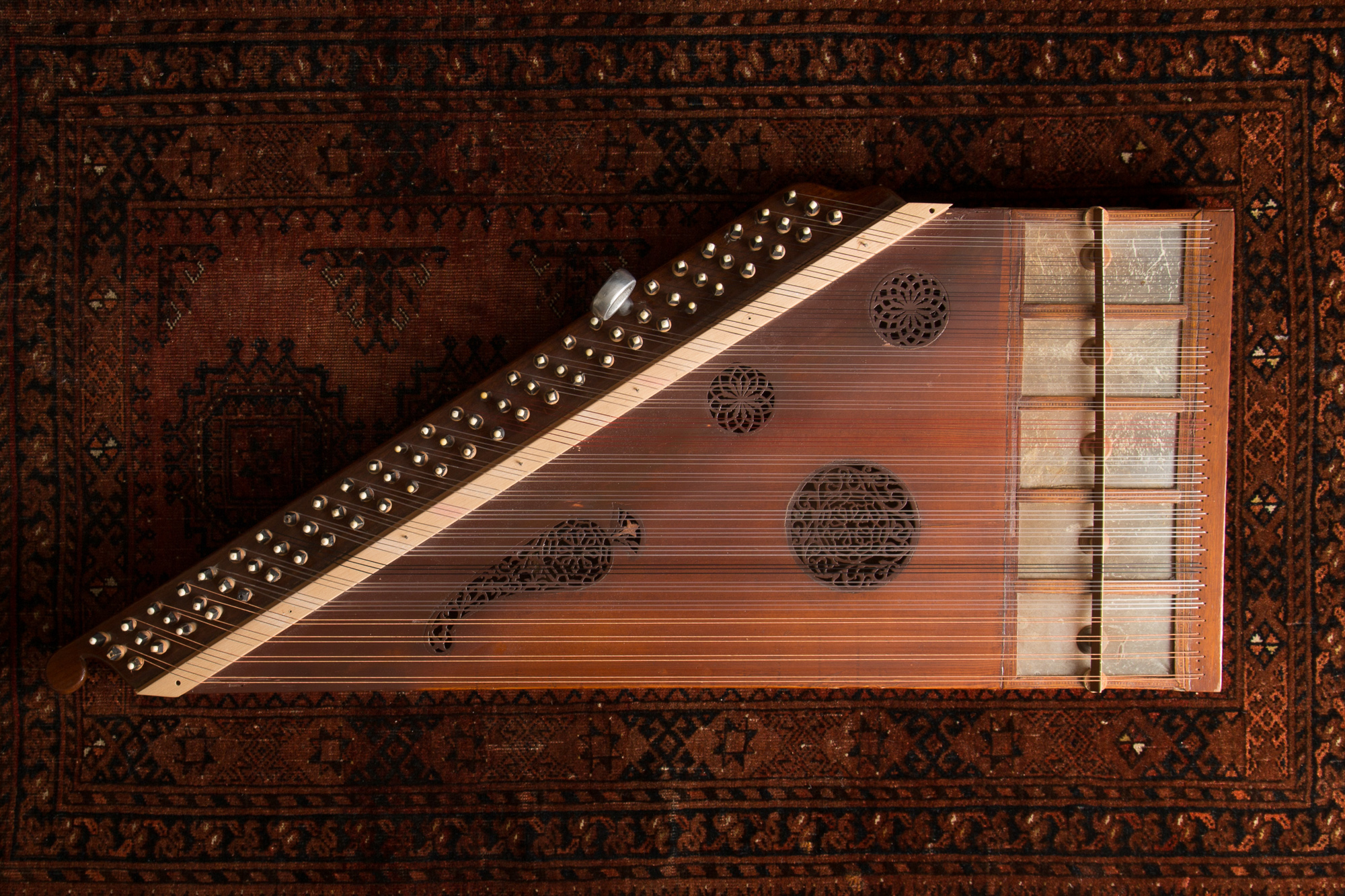
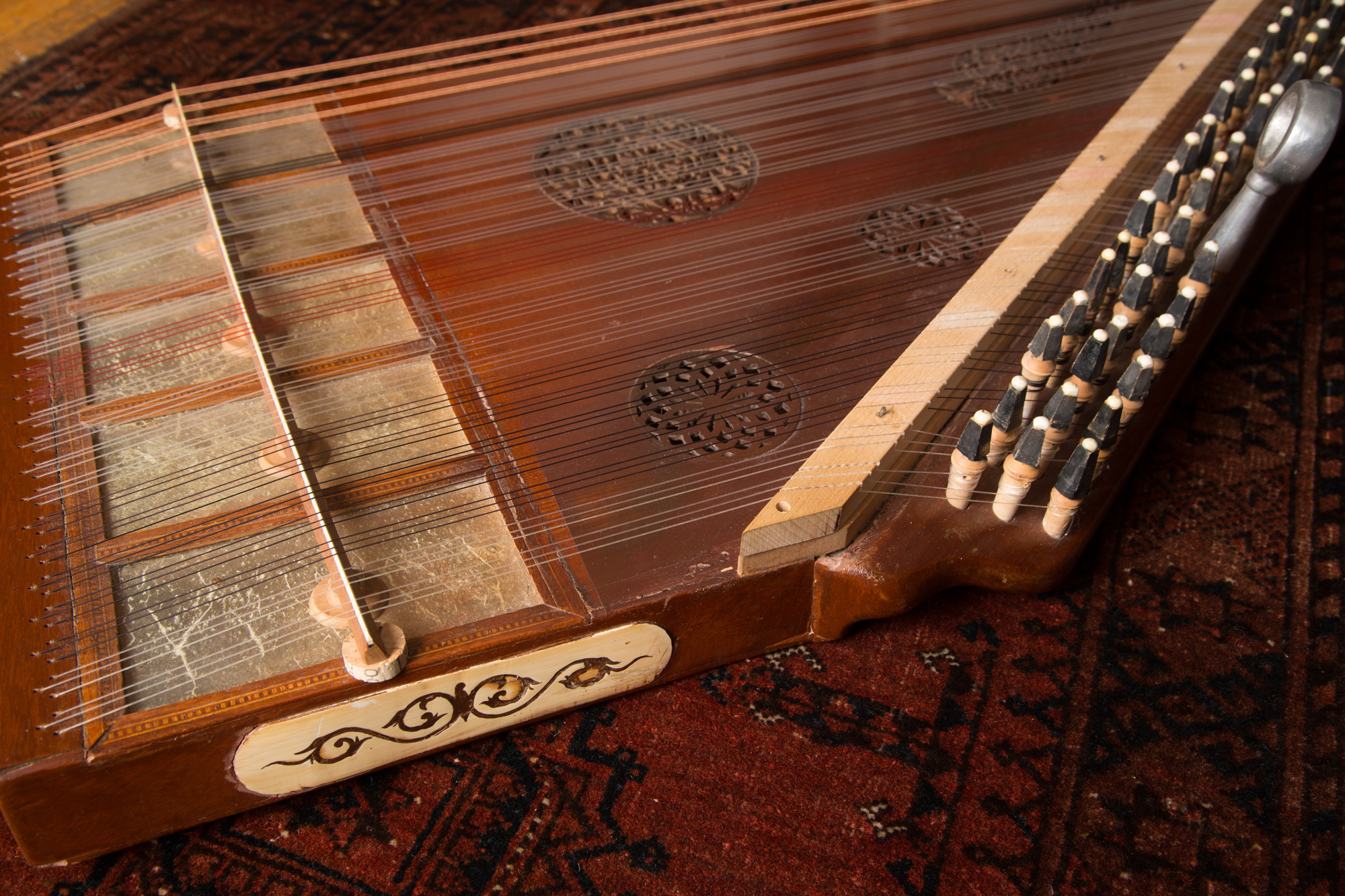
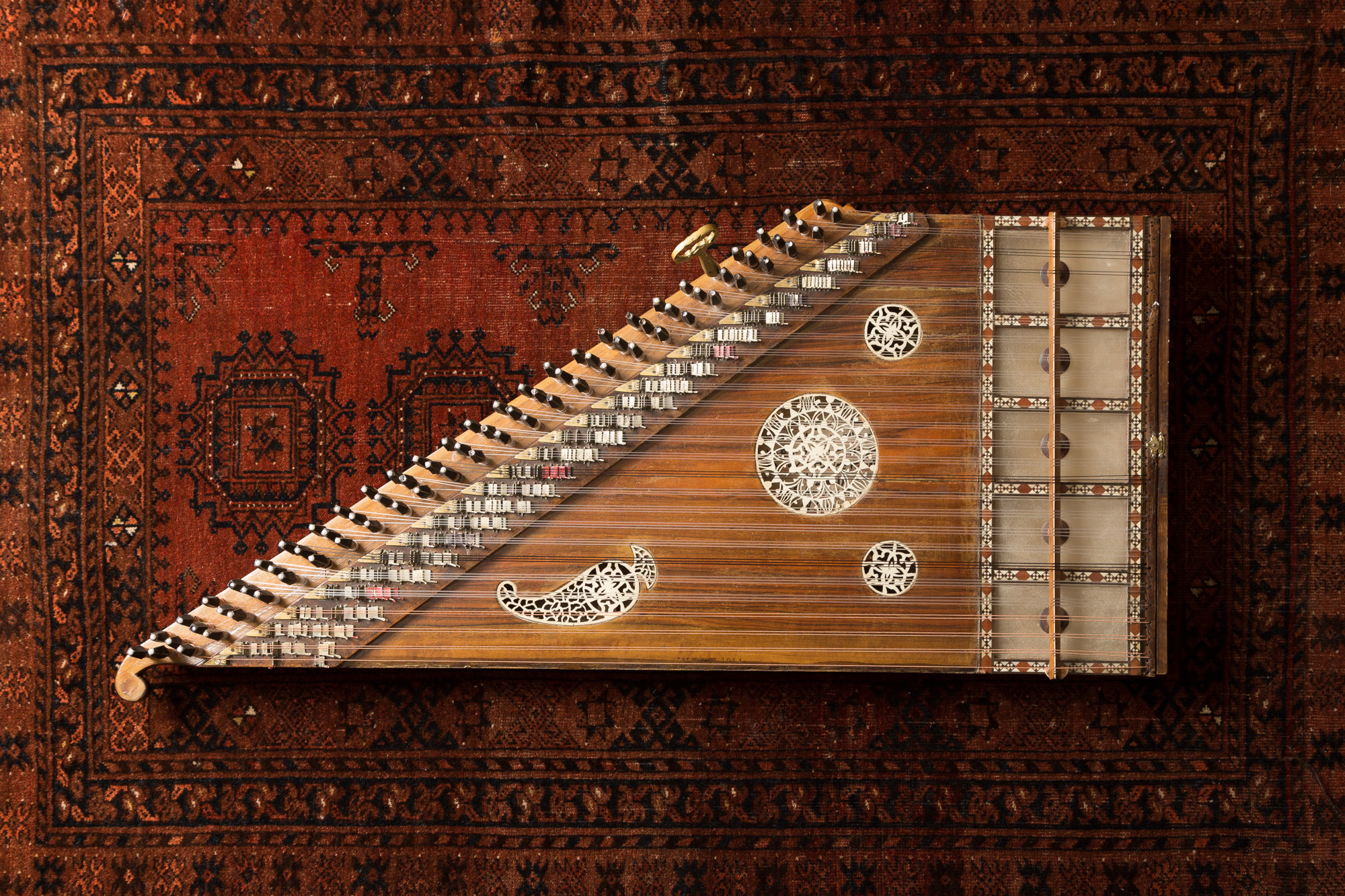
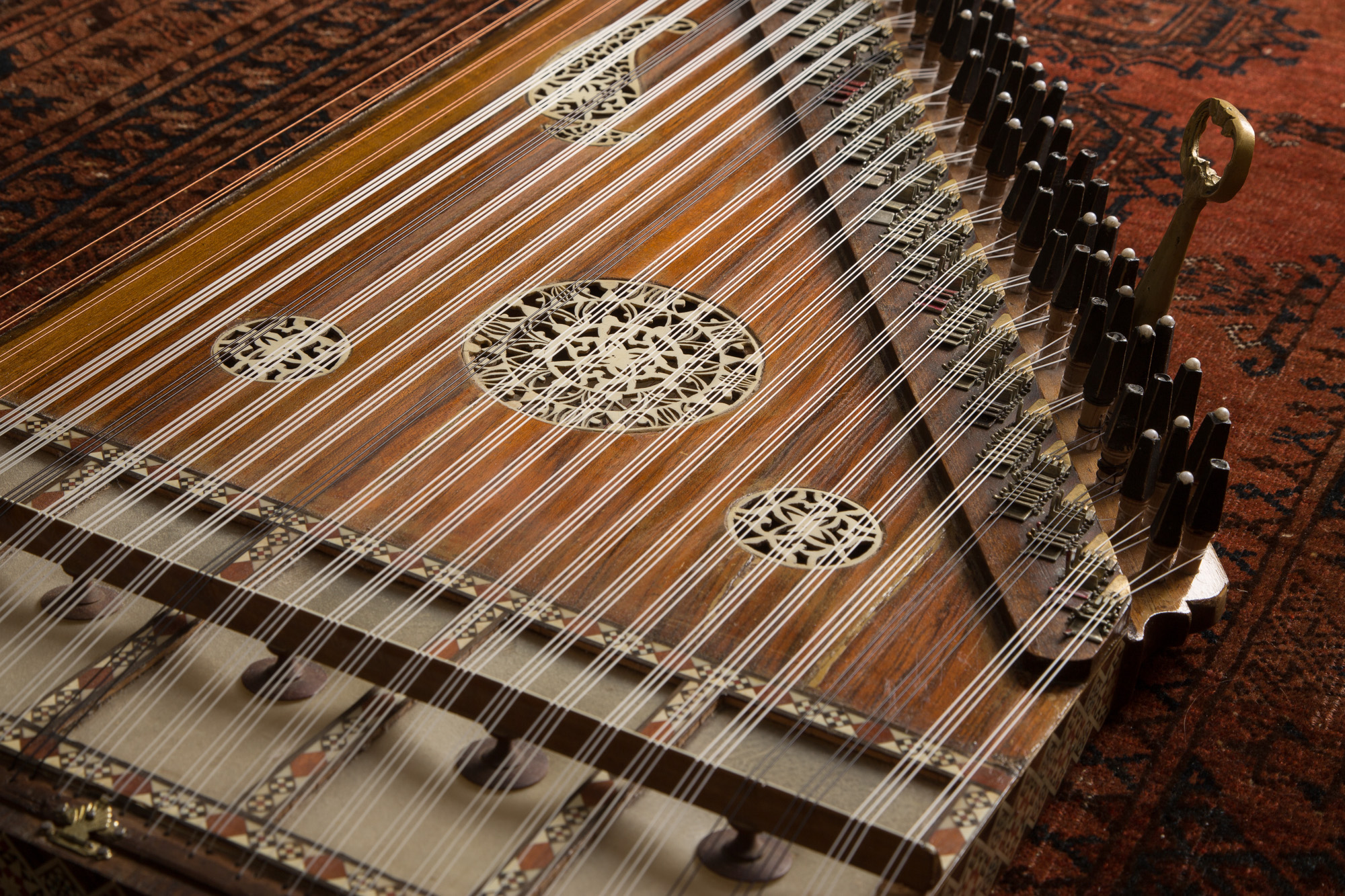
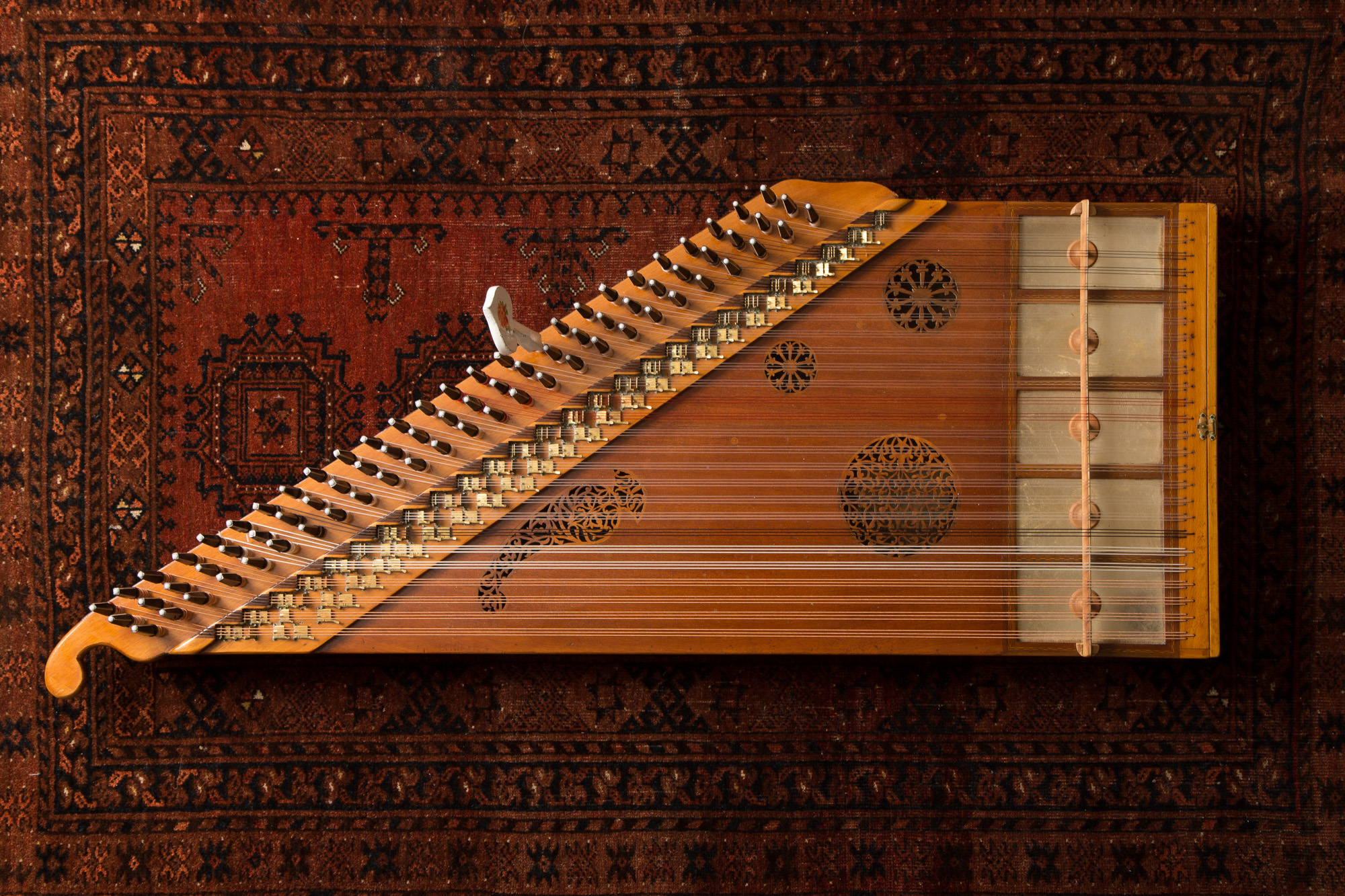
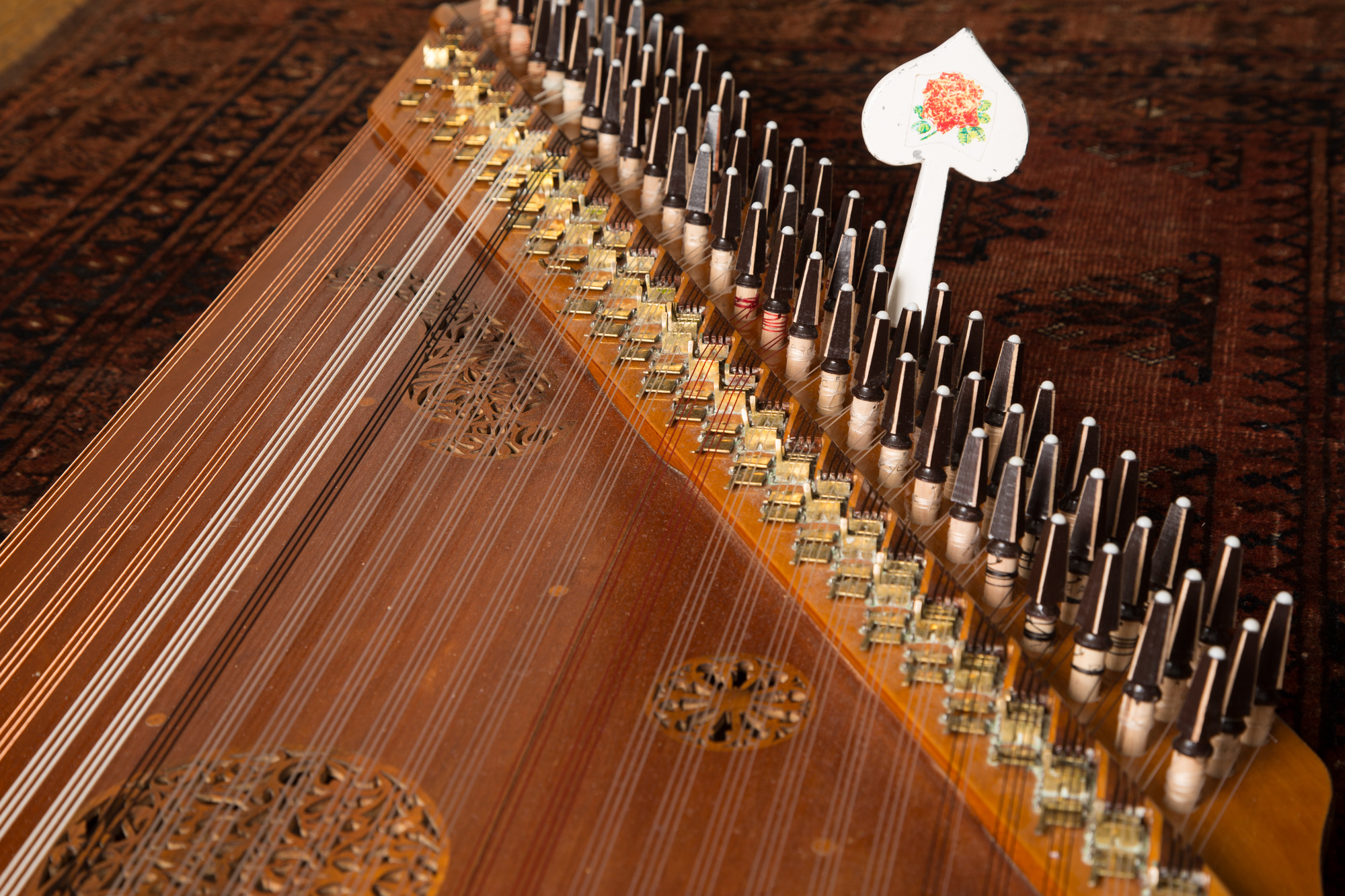
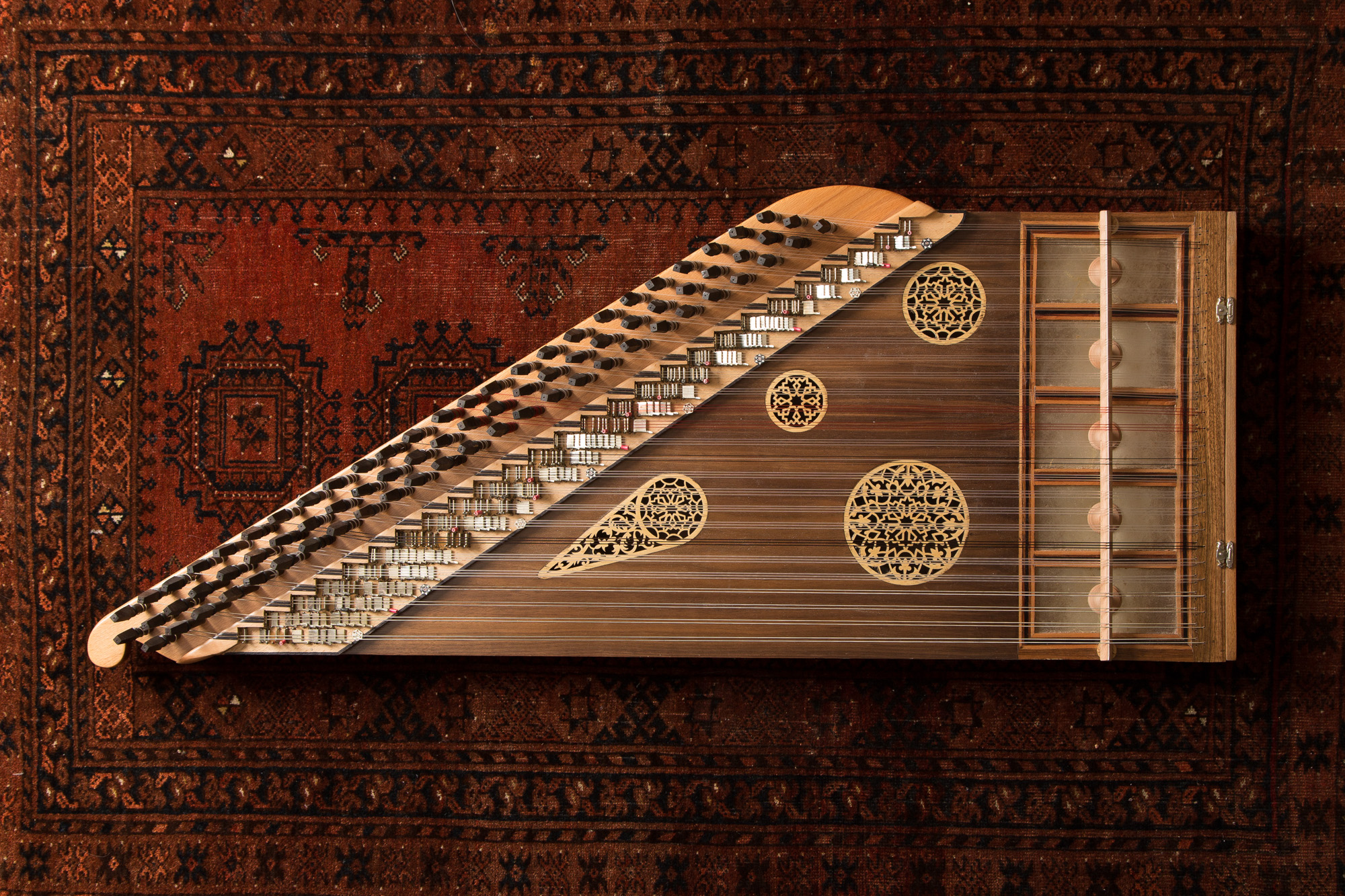
The early qanun had twenty-six sets of triple strings, and a player achieved accidentals (sharps, flats and microtones) in a given melodic mode through the skillful use of the left thumb.
In the early 20th century, sets of levers that could be flipped up and down were introduced, and a performer could use them to make sharps, flats, and quarter tones. My four Egyptian qanun teachers were trained by great masters of the earlier qanun technique, and they in turn passed on to me both the old and new styles of playing. However, I have long been fascinated by the older style of playing, and it is this technique that I explore in this recording.
In 1974, on a trip to Egypt, I was most fortunate to purchase one of the earlier period instruments from Mr. Mahmoud Ra’fat, a qanun collector and student of the legendary Mohammad el-‘Aqqad. The harpsichord maker Matthew Redsell helped me restore it to its original form by using, as a guide, a 19th-century drawing from Edward Lane’s An Account of the Manners and Customs of the Modern Egyptians.
The restoration consisted of removing the board with levers that had been added after the original construction, and replacing it with a board without levers.
I then strung the instrument with high quality harp strings, and the resulting sound is rich and warm, unlike any modern qanun.
It is, indeed, an instrument unique in the world. Not only is the sound of this instrument as close to the original as possible, but the tuning system can be rendered accurately, not limited by the modern system that limits the performer to a European-inspired tempered quarter-tone system.
For example, I can tune this instrument to the 17th-century tuning of the mode rast (C D E F G A B C) with both of the notes E and B one comma (one ninth of a tone) flat, and I can also tune it to the early 20th-century tuning of the mode huzam (E half flat F G A flat B C D Ehalf flat) with the note A flat raised by a comma and the B natural lowered by a comma.
To my knowledge, I am the only person today who owns and performs on such an instrument.
George Dimitri Sawa
Technical Description of
George's Antique Qanun
Technically a qanun is a psaltery with a right angled trapezoidal shape and 26 sets of triple strings with a range of 3 octaves and a fifth, from G, an octave and a fourth below middle C, to D, 2 octaves and a second above middle C. The bridge on the right hand side sits on 5 rectangular pieces of fish skin. The strings are plucked by water buffalo picks held to the index fingers by rings.
The outer dimensions are 38.5 cm and 106 cm for the parallel sides and 43 cm and 90 cm for the right angle and oblique sides respectively; the inner dimensions, that is, the string vibrating dimensions are 16 cm and 80.5 cm for the parallel sides and 41 cm and 77 cm for the right angle and oblique sides respectively; the height is 5.5 cm at the bass side and 5 cm at the treble side.
The kantir bass string that produces the 4 bottom notes G A B C below middle C were kindly given to me by my teacher Muhammad el-Sa‘douni from his atelier; D and E below middle C are G guitar strings with a thickness of 40 thousandth of an inch; the rest of the strings, F below middle C to D 2 octaves above middle C, are Lyon-Healy nylon harp strings with thicknesses ranging from 37 to 20 thousandth of an inch).
